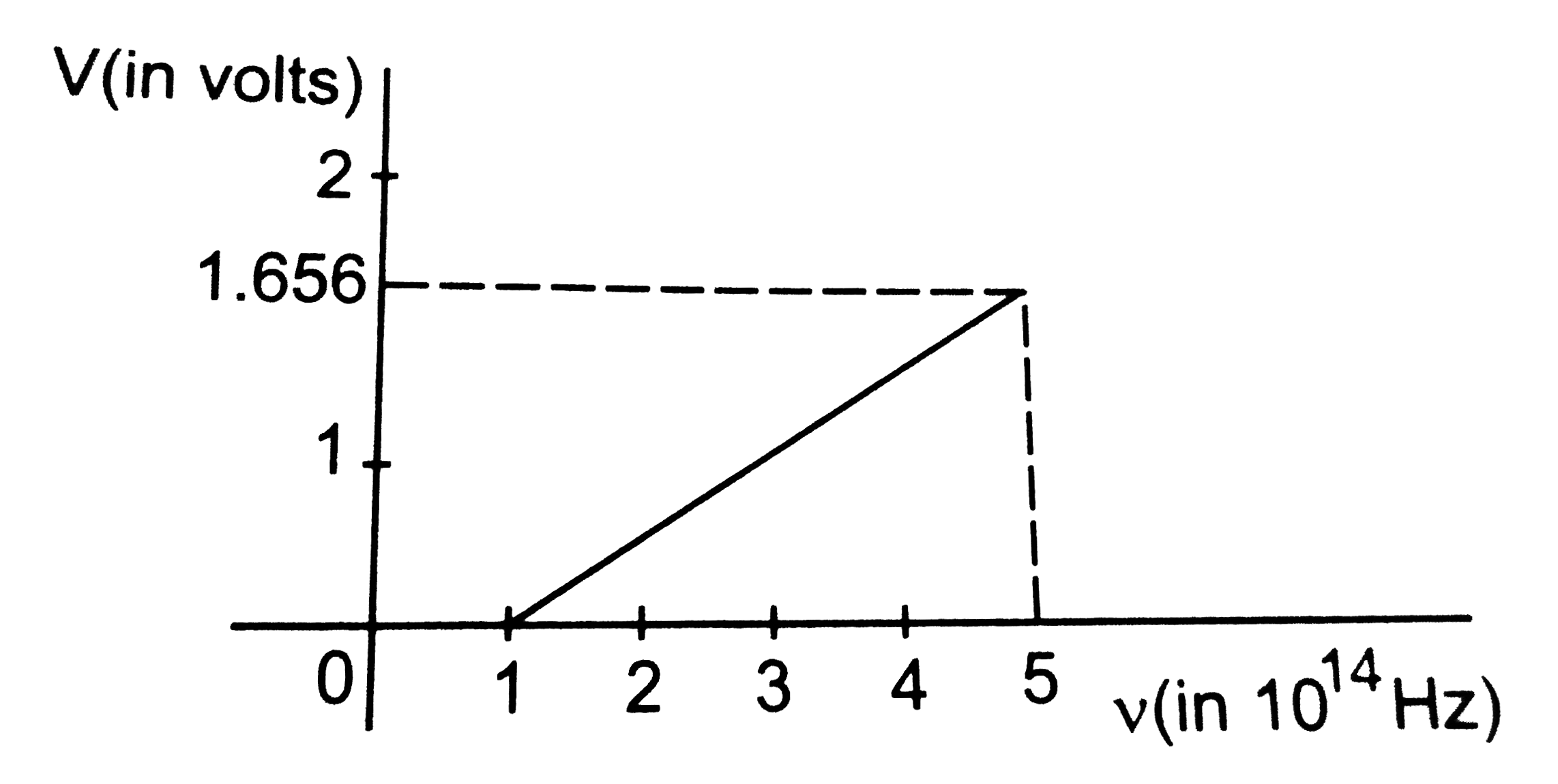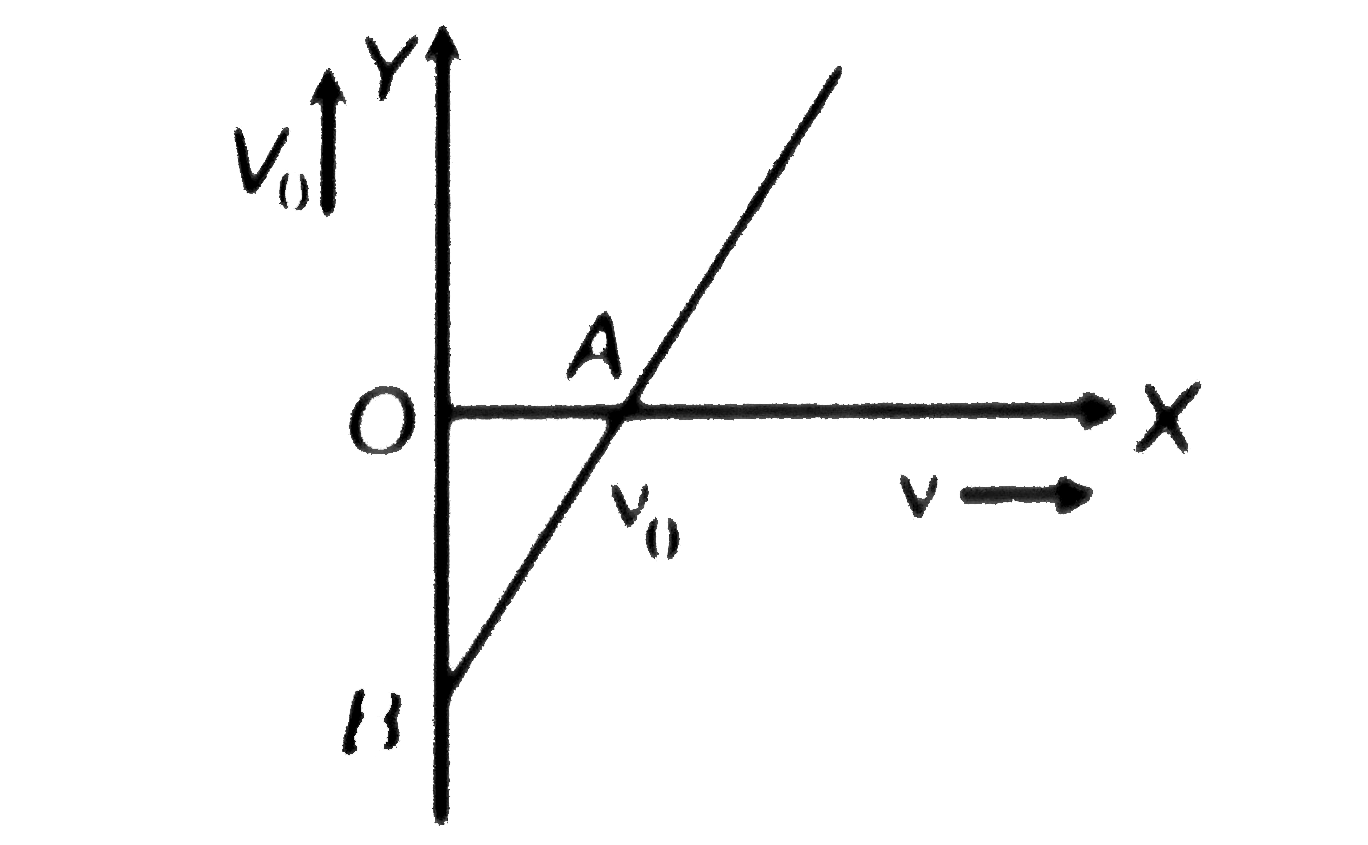Figure is the plot of the stopping potential versus the frequency of the light used in an experiment on photoelectric effect. Find (a) the ratio h/e and (b) the work function.
 Solution in Gujrati
Solution in Gujrati
We have to take two cases
Case - I v0=1.656 v=5×1014Hz
Case -II v0=0
v=1×1014Hz
(b) We know ev0=hv−W0
1.656e=h×5×1014−W0
0=5h×1014−5W0
1.6556e=4W0
⇒W0=1.6564eV
=0.414eV
(a) Putting the value of W_0 in equation (2)
⇒5W0=5h×1014
⇒5×0.414=5×h×1014
⇒h=4.414×10−15eV−s
Topper's Solved these Questions
- BOOK - HC VERMACHAPTER - PHOTO ELECTRIC EFFECT AND WAVE PARTICLE DUALITYEXERCISE - Exercises33videos
PHOTO ELECTRIC EFFECT AND WAVE PARTICLE DUALITY
- BOOK - HC VERMACHAPTER - PERMANENT MAGNETSEXERCISE - Exercises25videos
PERMANENT MAGNETS
- BOOK - HC VERMACHAPTER - PHOTOMETRYEXERCISE - Exercises16videos
PHOTOMETRY
Similar Questions
Visible light has wavelengths in the range of 400 nm to 780nm. Calculate the range of energy of the photons of visible light.
View SolutionA long bar magnet has a pole strength of 10Am. Find the magnetic field at a point on the axis of the magnet at a distance of 5cm from the north pole of the magnet.
01:46View SolutionA source emits 45 joules of energy in 15 s. What is the radiant flux of the source ?
01:36View SolutionFigure is the plot of the stopping potential versus the frequency of the light used in an experiment on photoelectric effect. Find (a) the ratio h/e and (b) the work function.
 01:50View Solution
01:50View SolutionFigure shows the plot of the stopping potential versus the frequency of the light used in an experiment on photoelectric effect. The ratio (h)/(e) is
03:41View SolutionIn an experiment on photoelectric effect the frequency f of the incident light is plotted against the stopping potential V_(0) . The work function of the metal is given by ( e is the electronic charge)
04:23View SolutionThe stopping potential as a function of the frequency of the incident radiation is plotted for two different photoelectric surfaces A and B . The graphs show that work function of A is
 02:55View Solution
02:55View SolutionIf the frequency of light in a photoelectric experiment is doubled the stopping potential will
01:36View SolutionA non-monochromatic light is used in an experiment on photoelectric effect. The stopping potential
05:30View SolutionIn a photoelectric experiment, two metal pairs plates A and B are used for a given light intensity I and frequency f. work function of metal B is more than that of A. The correct variation of stopping potential difference versus frequency is given by:
05:50View SolutionIn an experiment on photoelectric effect the frequency f of the incident light is plotted against the stopping potential V0. The work function of the photoelectric surface si given by ( e is the electronic charge)
 02:43View Solution
02:43View SolutionIn photoelectric effect the slope of stop of stopping potential versus frequency of incident light for a given surface will be
03:26View SolutionIf the frequency of light in a photoelectric experiment is doubled the stopping potential will
01:41View SolutionA non-monochromatic light is used in an experiment on photoelectric effect. The stopping potential
04:08View SolutionFigure is the plot of the stopping potential versus the frequency of the light used in an experiment on photoelectric effect. Find (a) the ratio h/e and (b) the work function.
 04:09View Solution
04:09View SolutionThe stopping potential as a function of the frequency of the incident radiation is plotted for two different photoelectric surfaces A and B . The graphs show that work function of A is
 01:03View Solution
01:03View Solution

